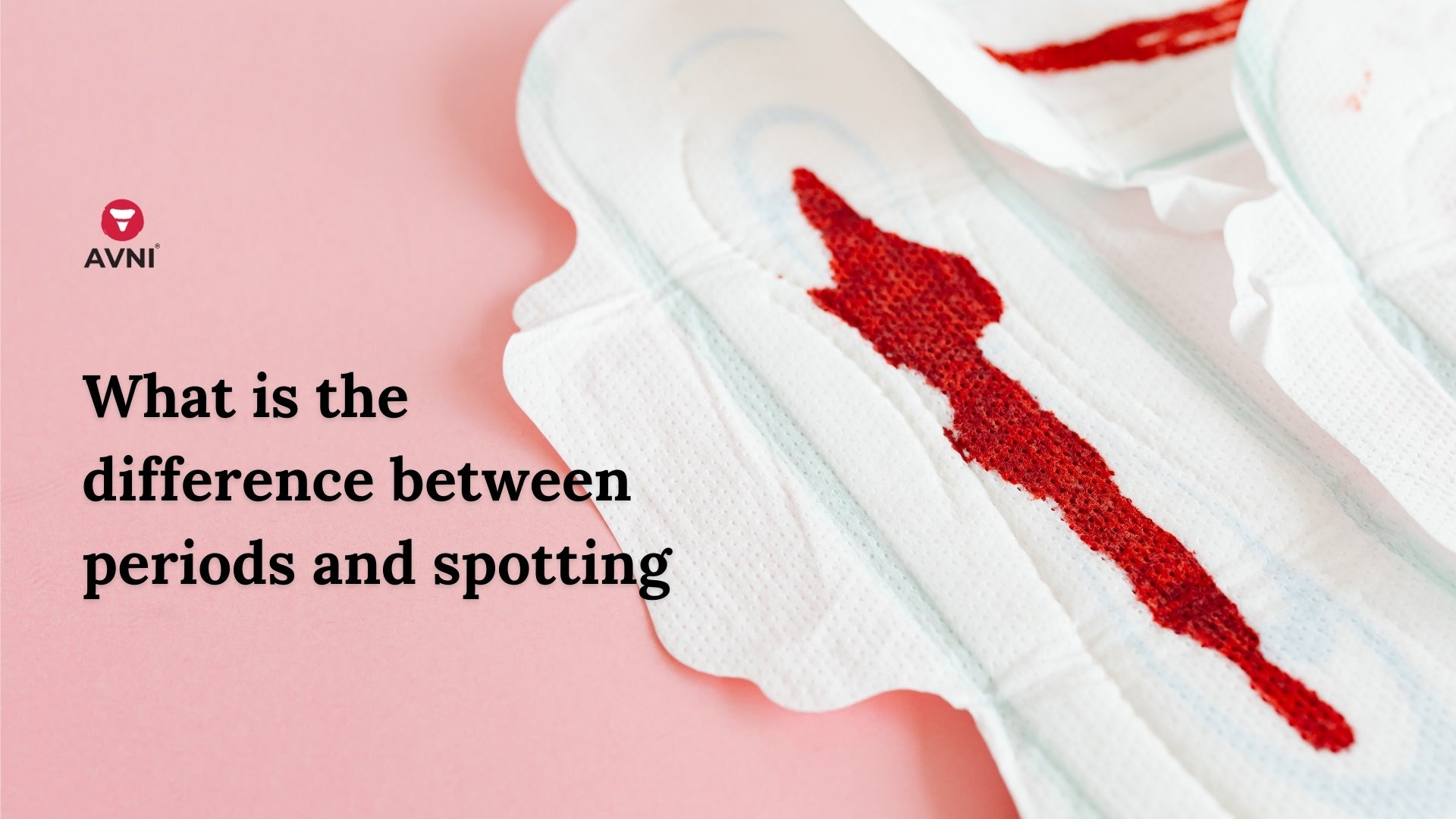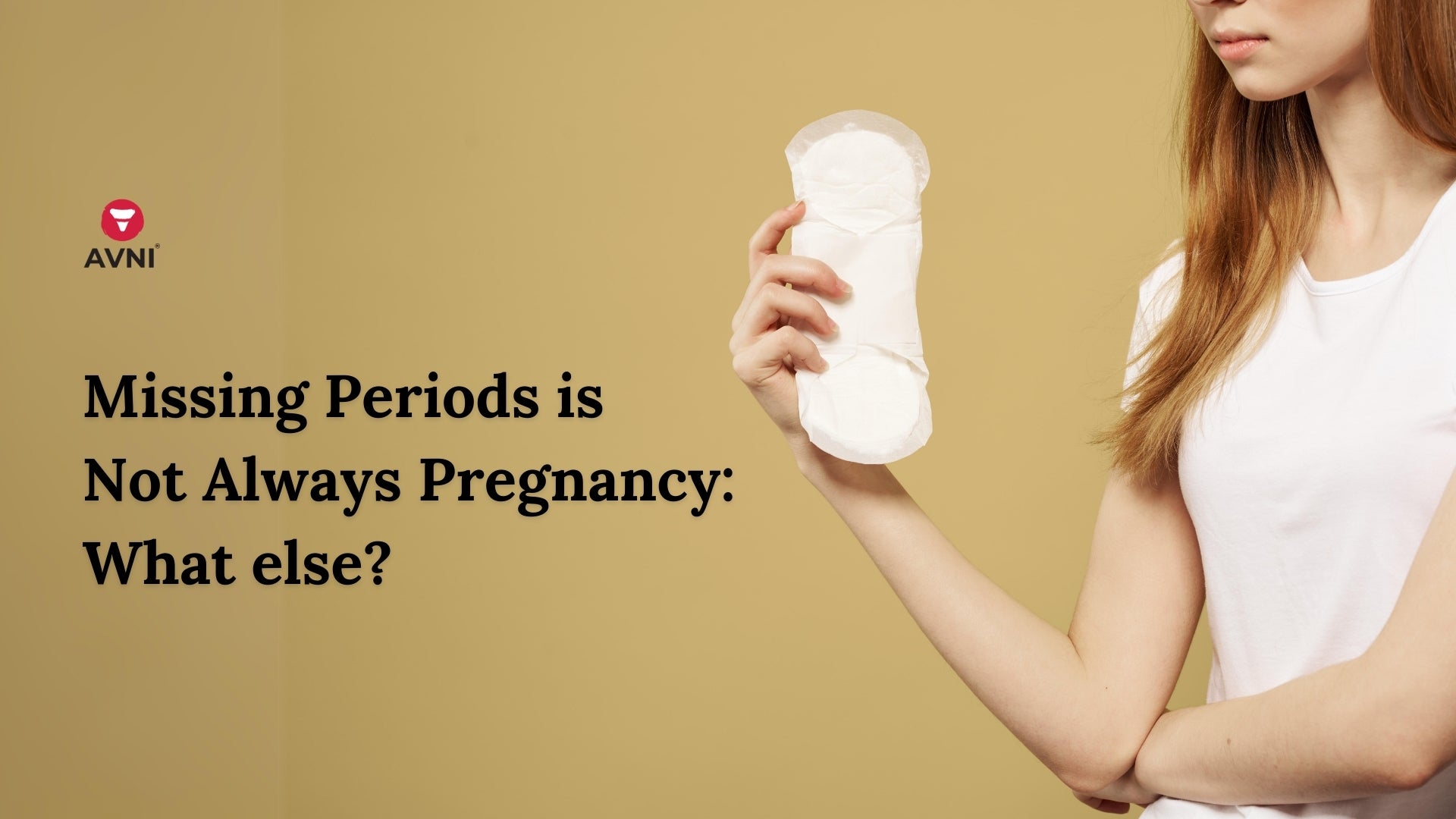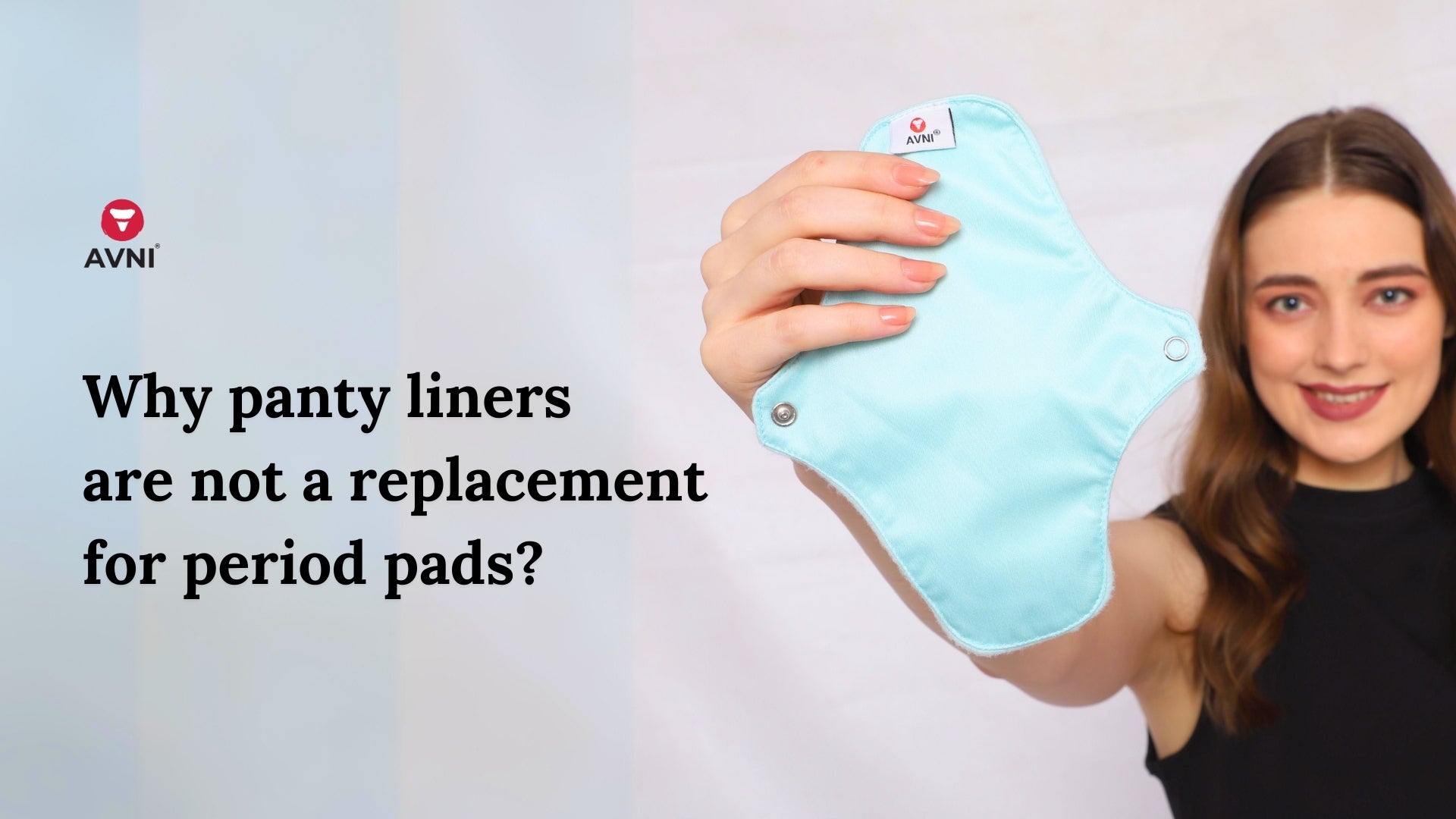
What is the difference between periods and spotting
You might often see a blood spot on a day when your date is yet to arrive. You might wonder, has my menstrual cycle turned irregular? Had I had a lot of coffee last month? Okay, such thoughts do cross our minds, duh.
But fret not, as there is nothing to worry about, as these drops of blood are perfectly normal. These spots are not your regular period but yet another kind of vaginal discharge—spotting.
You might as well think—If both spotting and periods have similar symptoms, why are the two different? Well, there's a significant difference between the two.

What is Spotting?
Spotting is light vaginal bleeding that happens outside of your regular cycle. Blood spotting usually occurs before and after periods. It can be either red or brown discharge and is light in color compared to your regular menstrual blood. Women who have regular periods track their period way in advance, so if they notice spotting before that, they can easily distinguish it from menstrual bleeding.
Spotting isn't your regular period, so the bleeding is lighter too. This means you won't need to wear a pad as you do during your periods and just a panty liner would do instead. If you are still worried about the bleeding getting heavier than expected, you can use a tested antimicrobial reusable cloth panty liner like Avni's 100% natural and cloth-based panty liner to stay stress-free during the spotting phase.
But let's admit that many of us are still confused between periods and spotting. So to clear your minds of this confusion, we have clarified the distinction between periods and spotting for you.
Let's go.
How is spotting different from periods?
Before you get your period, your body doesn't stay calm—in other words—it starts giving you various signs. While not every woman gets all these symptoms, many are familiar.
While you are approaching your periods, you see many symptoms that bother you, like tender breasts, mood swings, bloating, pain in the abdomen, etc. So your instincts tell you that you might get your period soon. However, spotting doesn't give you cramps or any of these symptoms.
Also, the bleeding isn't heavy as you might have guessed by its name—spotting, i.e., blood spots. Hence, it often gets unnoticed.
There's a difference in the time length of the two as well. For instance, your period would last up to a week, while spotting stops within two days.
Sometimes, you can also identify spotting by the color of the blood. For instance, spotting blood is brownish to dark red. Period blood, on the other hand, is reddish.
What causes it?
There can be various causes behind the spotting. Let's discuss them one by one.
- Contraceptive pills
Having birth control pills makes your ovaries halt their job of releasing the egg. In scientific terms, they prevent ovulation. They don't let the fertilized egg penetrate the uterine wall.
Initially, during the first few months of consuming these pills, the woman might experience spotting. Many times, missing a dose of it can also cause spotting. However, this stops on its own and is nothing to be bothered about.
There can be various causes behind this vaginal discharge. Let's discuss them
- Pregnancy
As pregnancy occurs after the fertilized egg gets embedded in the uterine wall, spotting might occur often. How?
As soon as the egg gets fertilized — it moves toward the uterus. The egg might cause slight bleeding, i.e., spotting, when it embeds its head into the endometrium lining. It finally settles there for the rest of your pregnancy phase.
- Ovulation
During ovulation, i.e., during the middle of your cycle, your body's hormonal levels, like estrogen and progesterone levels, usually change, causing ovulation bleeding. This occurs after around 14 days after you get your last period. However, if this bleeding gets heavier or is accompanied by painful cramps that don't go away, a visit to your gynac is highly recommended.

Types of spotting
There can be various types of spots based on the cause of the bleeding. Let's dive deeper into each one of them.
Spotting During Ovulation
As a woman, your menstrual cycle has ovulation every 14th day of the cycle. Many women experience light blood spots or brownish-colored vaginal discharge during this time. This is when you see the marks of light blood. This is just your estrogen levels dropping below the required amount. As this usually occurs during the ovulation period.
Spotting during implantation
Now, this type of spot can be indicative of pregnancy as well. As the name suggests, this occurs during the implantation phase of the egg. Suppose the egg gets fertilized, and it heads to your uterine wall.
Now, implanted into the delicate endometrium layer of the uterus results in slight bleeding. This occurs around 12 days after conception, around the time the fertilized egg tries inserting its head into the uterine layer.
Many women do not experience implantation bleeding. Many don't even know they got it. Spotting bleeding usually occurs around the time you should ideally get your period.
There's nothing to be concerned about. Meaning many times, you might mistake it for your periods. However, you must pay attention to the blood color and flow to clarify. If the bleeding causes discomfort or you think it is something that may affect your pregnancy, it is best to see your gynac .
Spotting after sexual intercourse
Spotting can also occur after sexual intercourse if there's inflammation in your cervical region. This is usually common but should be brought to medical attention if the bleeding persists. In rare cases, it can be due to cancer or STDs too.
Perimenopausal Spotting
Women usually experience menopause in their 50s. The typical sign could be not getting her periods for 12 months or more. However, it might take up to 10 years to fully transition from the menstruating phase to menopause, when she finally stops getting her periods.
This phase also called the perimenopause phase, is when a woman starts experiencing changes in the menstrual cycle and gets light spotting at times. Spotting in this phase is quite common and isn't an indicator of any serious issue.
Cancer
While spotting isn't something to be concerned about, it is an indication of cervical cancer in rare scenarios. According to medicalnewstoday.com, symptoms can range from heavy vaginal bleeding after sexual intercourse, heavier periods, unusual vaginal discharge, and pain during sex. In many women, the symptoms can be vaginal bleeding after menopause.
The final take
Spotting is quite common and should not be worried about. In this article, we spoke to you about the causes of discovery and how it differs from your monthly menstruation. The bleeding due to the spot is lighter, so you don't need a pad or menstrual cup during the spotting days.
While you want to avoid wearing a pad during the spotting period, you can use Avni's reusable Lush panty liners for those non-period days. These are India’s widest and 100% natural cotton panty liners available in three different sizes to help you tackle the spotting phase with ease and comfort.



Leave a comment
This site is protected by hCaptcha and the hCaptcha Privacy Policy and Terms of Service apply.